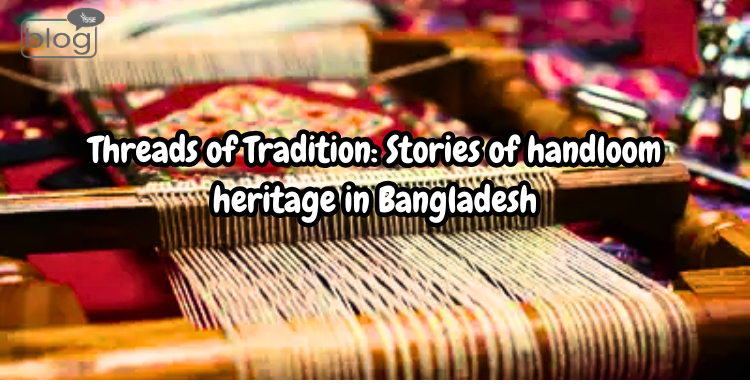Yes, there is history—an ancient song of wooden drums and the noise of a weaving shuttle, or perhaps the songs of Romans, Gauls, and Vandals? For the people of Bangladesh, handloom weaving is not only a source of income. It is in turn the drink at which the tradition that is interwoven into the fabric of the nation’s spirit feeds. Each saree is a documented chapter on the life of the artisan. The Laciness of the jamdani speaks volumes of the enduring heritage of the craft; the sheer elegance of the Muslim enfolds dreams as the mother comforts their babies.
Threads of Time
Handloom industry in Bangladesh has its origin more than thousand years back, with its early existence in the riverside settlements. Undoubtedly, the female spirits took over this art as women tend to practice in secrecy and faithfully. Dhaka muslin cloth which could be passed through a ring was worn by the then Mughal emperors of India and the jamdani saree beautifully adorned with motifs turned into icons of elegance and tradition.
Celebrated in the campaign for inclusion in the list of UNESCO’s Intangible Cultural Heritage List, jamdani weaving is very much alive, and still links the contemporary world to tradition. Every one of these is a testament to workmanship, time, and above all a link to ancestors.
Under the Loom’s Shadow
Imagine the weaver in a calm town, with thrown-together grass thatching and a small roof above him. The loom is as regular as a heartbeat, and the sound commingling with the hustle of bamboo foliage. He gestures with the steady nonchalance of a man who knows he is putting the creative part of himself into the weaving of garments— lotus, rivers, geometric patterns. Every piece is a furnishing of the heart of his family, a reflection of the artistry of his forefathers.
If these artisans were threading a loom, they were threading dreams, emotions, and stories into each saree. Every one of them is a story, and the story of resistance, love, and creativity.
The Craft Meets Modernity
Despite its acclaim as a traditional product, the import of handloom products did not stay stagnant as it evolved. Now younger designers incorporate today’s concepts into traditional patterns but still use the methods of weaving ancient dresses. Jamdani sarees are now a part of fashion ramps in many countries, and muslin has gotten a new spin for today’s fashion-conscious woman. In addition to sarees, handloom fabrics are applied for accessories, furnishings, and contemporary apparel fashion wear products.
This integration of tradition and innovation has helped in the new outreach of Bangladeshi handloom weaving; however, a new set of problems has emerged as well. Lack of identity due to power loom, excessive production, and gradually increasing price of raw material are the main concerns for this tender technique. Behind all these masterpieces there is a weaver struggling against such odds, to preserve their heritage.
Challenges and Hopes
Thus, the current state of the handloom sector remains weak, notwithstanding its appreciation and history. The problems of artisans include poor economic status, restricted market and social visibility, and low recognition. Yet, there is hope. Online sales platforms are bringing weavers from small villages all over the world to the global market. Welfare measures and these local drives to ensure fair wages and skill development programs are preserving this heritage.
These remain key principles that must be complemented by supportive policies, fairly traded practices and raised awareness. However, nothing is more important than appreciating and acknowledging the stories, dreams, pains, and beauty of the artisans.
A Heritage Woven in Pride
When you run your fingers over the soft folds of muslin or marvel at the vibrant patterns of a jamdani saree, pause. Think of the artisan under his palapa, weaving not just fabric but history and hope. Imagine the stories embedded in every thread, the heritage preserved in every design.
These fabrics are more than clothing; they are living art. They carry the heartbeat of a nation and the resilience of its people. To wear a handloom saree is to embrace a legacy, to honor a craft that has endured centuries, and to celebrate the dreams and stories of those who create it.
For within these threads lies the essence of Bangladesh—a tapestry of tradition, artistry, and an unwavering connection to its roots.
To read more blogs like this click here
Writer
Jemi Sailuk
Intern
Content Writing Department
YSSE.

